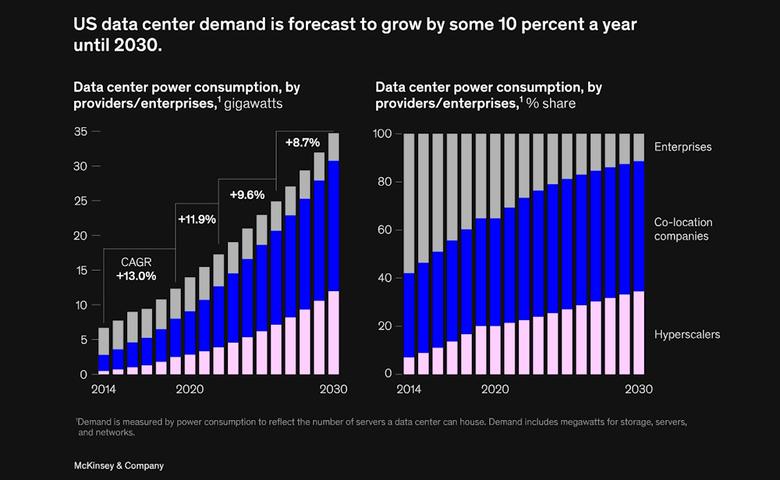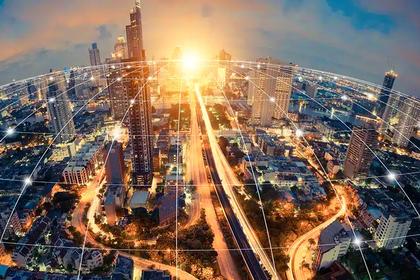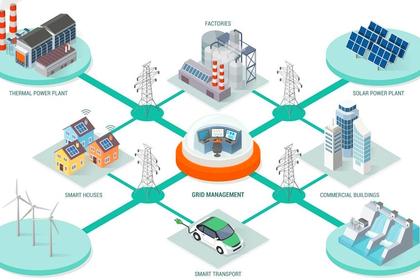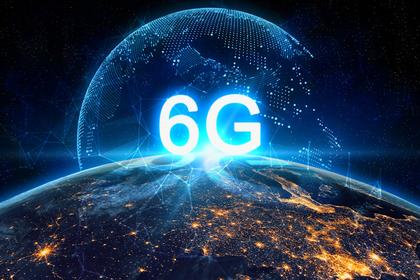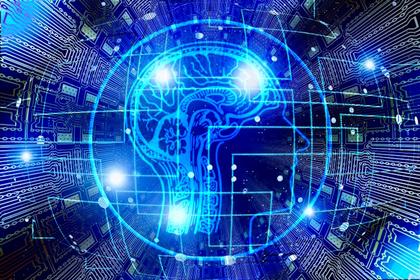According to the International Energy Agency, data centers—propelled by AI, cryptocurrencies, and telecommunications—consumed approximately 460 terawatt-hours (TWh) of electricity globally in 2022. This figure represents nearly 2% of total world energy usage, with projections suggesting a tripling of this demand by 2030, equating to the annual electricity consumption of nations like the Netherlands, Argentina, and Sweden. The Yale Environment 360 report underscores this point, noting the substantial energy required to train sophisticated AI models, a process that not only burdens electrical grids but also significantly increases the carbon footprint of digital operations.
The traditional electricity grid, designed decades ago, is increasingly misaligned with the needs of modern technology and population growth. This aging infrastructure often struggles with reliability and efficiency, with many grids hampered by outdated technology and capacity limitations. Research by The Brattle Group estimates that just to keep the grid and power supply at a reliable level, spending could reach between $1.5 to $2 trillion by 2030.
When Data Centers Become Too Big To Handle
As we cast our gaze globally, we see a trend emerging. Local governments and administrations are hitting the brakes on the construction of new data centers. The reason? The staggering power consumption of these facilities and the subsequent strain on local grids and communities. Data centers are turning from a financial asset, into a liability, able to potentially black out entire areas and hold back residential advancement. Dublin, Ireland, for instance, has halted the integration of data centers into its power grid until 2028. Singapore and the Netherlands have followed suit, enacting legislation to pause data center construction. The common thread weaving through these decisions is a concern for sustainability and the burden that these multi-megawatt facilities place on their power grids.
In North Dakota, Sen. Norm Needleman, co-chair of the Senate Energy and Technology Committee, has initiated legislation to study the impact of data centers on the state’s electric grid. He warns that missteps at this juncture could precipitate a “real crisis.”
Meanwhile, the state’s sole nuclear power plant is considering an agreement that would grant a new data center hub preferential access to its electricity. The consequence? Less carbon-free power for other users, specifically homeowners.
Virginia, which boasts the world’s largest concentration of data centers, has launched a legislative study to understand how these operations are impacting electric reliability and affordability.
This is a path more and more states are finding themselves on, as they grapple with the challenge of finding a clean energy solution that can cater to both data centers and residents without prioritizing one over the other. The road ahead is uncertain, but the journey is necessary.
Going Clean
Renewable energy sources, such as solar and wind, are pivotal to the green energy transition, offering low emissions and growing cost-effectiveness. These technologies could potentially be the solution to the data center's energy consumption and strain on the grid. However, their integration faces substantial hurdles. Their intermittent nature clashes with the grid's need for consistent power flow, necessitating advanced but still-developing storage solutions. Additionally, the existing grid infrastructure often cannot accommodate the full potential output of these renewables due to its outdated components—a costly dilemma to rectify. In 2022, in the US only, there were over 1,250 GW of zero-carbon generating capacity waiting to be connected to the grid, but couldn’t. More than 80% of projects on the waiting list simply cease to exist due to the long waiting times and bureaucracy.
Furthermore, the substantial land footprint required for solar and wind farms—up to 360 times more for wind and 75 times for solar compared to nuclear facilities, according to the Nuclear Energy Institute—compounds challenges, also when considering the recycling of the hardware.
Nuclear energy, including advancements in small modular reactors (SMRs), presents an alternative. These reactors leverage scaled-down fission technology and incorporate new safety enhancements, such as advanced cooling and passive safety systems. As highlighted in Power Magazine, SMRs could align more closely with contemporary energy demands. However, they too face hurdles: limited fuel supplies, public safety concerns, handling of radioactive waste, and extensive regulatory landscapes.
Against this backdrop, the allure of nuclear fusion—often described as the Holy Grail of clean energy—grows stronger. Fusion promises a vast supply of clean energy by mimicking the sun's energy production through the collision and fusion of atomic nuclei, creating helium and releasing immense energy without the fear of radioactive waste or weaponization risks, and with a virtually unlimited fuel supply. The primary challenge of achieving and maintaining the necessary conditions for fusion has eluded scientists for decades, but recent advances in materials, power electronics, computing abilities, and other technologies look promising, and more than 42 companies around the world are working on solving the fusion problem, with a combined investment of more than $6b.
However, even if the fusion technology currently being developed by numerous companies were to be realized and brought to market, its integration would still be largely dependent on the existing electrical grid. This reliance underscores a persistent bottleneck that complicates efforts to meet the escalating energy demands and expansion requirements of data centers and other energy-intensive technologies. While fusion energy plants could serve as an effective solution for large data center hubs, these facilities would need to be strategically positioned around such cutting-edge power sources to fully capitalize on their potential.
Yet, there are two critical constraints on the expansion of digital infrastructure. The first is the rapid, ad-hoc scalability of data centers. When a hyperscaler decides to expand by adding an extra block of servers, the need for additional land and power becomes immediate. If these data centers are clustered around a single, large power source, they must share this resource with others. Consequently, a request to increase power consumption can affect all nearby players, creating potential bottlenecks that can impede progress and hinder development.
The second constraint is the nature of edge computing, which typically involves smaller data centers situated close to where the data is utilized, rather than near large, centralized power sources. This proximity is crucial for reducing latency and enhancing the speed of data processing, but it also poses unique challenges in power supply and infrastructure. Edge computing locations, by their very nature, require flexible, reliable power independent of large-scale grid systems, which are often not optimized for the sporadic and geographically dispersed demands of these modern computing solutions.
Is Edge Computing the Future?
"Edge computing will play a pivotal role in the deployment of AI applications," said Dave McCarthy, research vice president, Cloud and Edge Services at IDC. "To meet scalability and performance requirements, organizations will need to adopt the distributed approach to architecture that edge computing provides. OEMs, ISVs, and service providers are taking advantage of this market opportunity by extending feature sets to enable AI in edge locations."
As digital transformations deepen their roots across global industries, edge computing is emerging as a critical technology, poised for explosive growth. According to Expert Market Research, the edge computing market is projected to surge from approximately USD 15.54 billion in 2023 to around USD 147.38 billion by 2032, achieving a compound annual growth rate (CAGR) of 28.4% during that period. The Asia Pacific region, in particular, is expected to witness even more accelerated growth.
This expansion is driven by a wide array of sectors recognizing the benefits of edge computing to boost operational efficiency and data management. AI at the edge will allow for real-time decision-making and analysis without relying on the far-away data center hubs.
In healthcare, for example, there is a growing implementation of edge technologies for managing patient records and facilitating remote patient care. Similarly, the manufacturing sector is leveraging edge computing for predictive maintenance and real-time data processing, activities critical to modern industrial operations.
Telecommunications and IoT companies are also capitalizing on edge computing to enhance the management of the enormous data flow from mobile devices, thereby improving the performance of mobile networks. By processing data closer to where it is generated, these companies can deliver content more swiftly and reliably, significantly enhancing user experience.
Even the retail sector utilizes edge computing, for example, to transform customer shopping experience by providing personalized VR, AR, and AI services, streamlining inventory management, and integrating online and physical store operations more seamlessly.
In transportation and logistics, edge computing is becoming indispensable for autonomous driving, real-time tracking and monitoring, predictive maintenance, and efficient route management.
Furthermore, for smart city initiatives, edge computing plays a pivotal role by facilitating the local processing of data from a myriad of sensors throughout the urban environment, and allowing real-time feedback and processes to take place.
Thus, the future of computing architecture appears destined for a hybrid approach. Likely, it will involve a strategic blend of hyper-scaler hubs, which provide robust, centralized processing power, alongside edge computing, which offers agility and proximity to data sources. This mixed-use model aims to balance the scale and power of large data centers with the responsiveness and localization necessary for efficient real-time computing.
Given these extensive applications and the critical nature of proximity in data processing, large centralized fusion power plants fall short as a solution for the diverse and geographically dispersed needs of edge computing. The inherent inefficiencies and unreliability of the traditional power grid, coupled with logistical challenges posed by location, underline the necessity for a more adaptable and decentralized energy solution.
The Power of the Future
This introduces the transformative potential of Compact Fusion technology, which could deliver clean, scalable, and continuous power independent of geographical or infrastructural constraints. By enabling localized, grid-free energy production, compact fusion devices could revolutionize energy use in data centers and edge computing locations, offering a stable, independent power source detached from the inefficiencies of aged grid infrastructure.
This shift could also transform this clean, plentiful, and robust energy source into an Uninterrupted Power Supply (UPS) for the local grid, town, or neighborhood during periods of grid instability. This would effectively turn the data center from a liability into an asset - a stark contrast to the current trajectory we outlined at the start of this piece. The very thing that was once seen as a burden could become a beacon of stability.
The path to commercializing compact fusion involves complex scientific and engineering challenges, particularly in sustaining a controlled fusion reaction in a compact format. Companies globally are investing in this endeavor, with initiatives like nT-Tao Compact Fusion Power in Israel working on a shipping-container-sized 10-20 MW system potentially suitable for powering a decentralized energy future. The company puts its timeline of a working proof of concept by the end of the decade. Such innovations not only promise to meet the needs of data centers and edge computing but also offer zero-emission solutions for industries like shipping, which has set a target of reaching zero emissions by 2050, and the EV car and truck fleets industry, which is similarly constrained by current grid limitations.
As we navigate this evolving landscape, integrating compact fusion into our energy strategy could fundamentally alter how we manage data centers and approach energy consumption and environmental stewardship in the digital age. The pursuit of such cutting-edge technology reflects a broader commitment to ensuring that our technological advancements sustainably coexist with the health of our planet.
-----
This thought leadership article was originally shared with Energy Central's Generation Professionals Group. The communities are a place where professionals in the power industry can share, learn and connect in a collaborative environment. Join the Generation Professionals Community today and learn from others who work in the industry.

